EMED 5001
Emergency Medicine Clerkship - Ultrasound
Welcome to the Emergency Medicine Clerkship (EMED5001) Ultrasound page. The purpose of this site is to provide clinically relevant education on how to use point of care ultrasound (POCUS) during your clerkship. The POCUS assignment is designed to give you a deeper understanding of some of the concepts taught during the clerkship.
EMED 5001 Image Upload and report link Patient Consent Email Images to Yourself
Rapid Ultrasound for Shock and Hypotension (RUSH) Exam
Why is the RUSH Exam part of the EM Clerkship?
The RUSH Exam combines everything you have learned in point of care ultrasound (POCUS) to determine the type of shock a critically ill patient has. This is important for several reasons. First, understanding shock and hypotension is a critical competency for all graduating students. This assignment helps you understand the underlying pathophysiology of the various types of shock. Secondly, this is the capstone assessment of our ultrasound curriculum. This assignment requires you to use all of your image acquisition, image interpretation and clinical integration skills that we have taught you during the curriculum to successfully complete this assignment. Lastly, this assignment allows you to become a true member of the team – performing a diagnostic test yourself, interpreting the results, and reporting your diagnosis to your faculty. We do not expect you to always be correct in your assessment, but we do expect that your understanding of the patient’s condition and the underlying pathophysiology will increase with each patient you assess with your ultrasound skills.
What is the RUSH Exam?
The RUSH Exam is a protocol to help sort out the various causes of shock. It combines the evaluation of the IVC and heart to help you know if the patient has enough, too little, or too much volume. Then you use selected (goal-oriented) POCUS to help you identify the underlying cause of the shock.
What are the views in the RUSH Exam?
That depends on the patient. There are different ways to do this exam. I prefer looking at the IVC first. Then based on what I find with the IVC, I then look at other parts of the patient’s physiology based on my clinical assessment. Remember POCUS starts with a differential diagnosis. You use ultrasound to interrogate your differential diagnosis. Say for example, you have a young healthy female come in after running a marathon with a low blood pressure. You would most likely assume that the cause of their hypotension is dehydration. So, you would expect their IVC to be small and collapse with respiration and their heart to be hyperdynamic. Now, suppose it is the same female, but she did not run a marathon. If you thought of your differential diagnosis, I would hope you would have ectopic pregnancy on the list. If that were the cause of her hypotension, you would expect to find a similar picture with the IVC and heart as you would with dehydration. But in this case the cause is not dehydration but blood loss. Where would that blood be? Well, a FAST exam allow you to evaluate for internal bleeding, which if present, would augment your differential diagnosis of ectopic pregnancy.
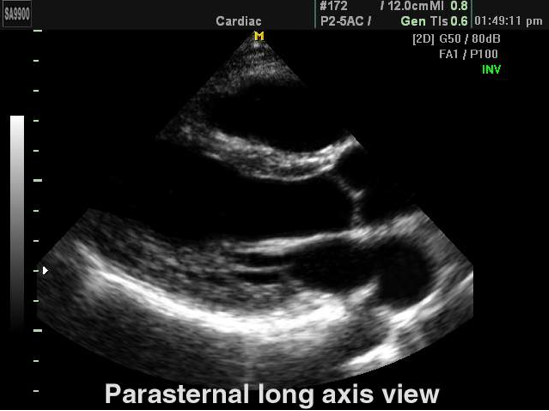
Parasternal Long Axis View
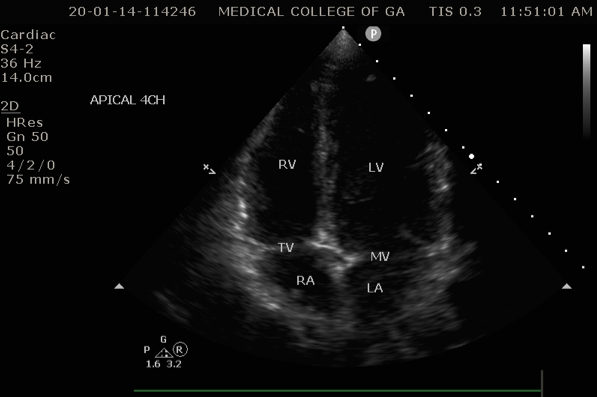
Apical 4-Chamber Heart
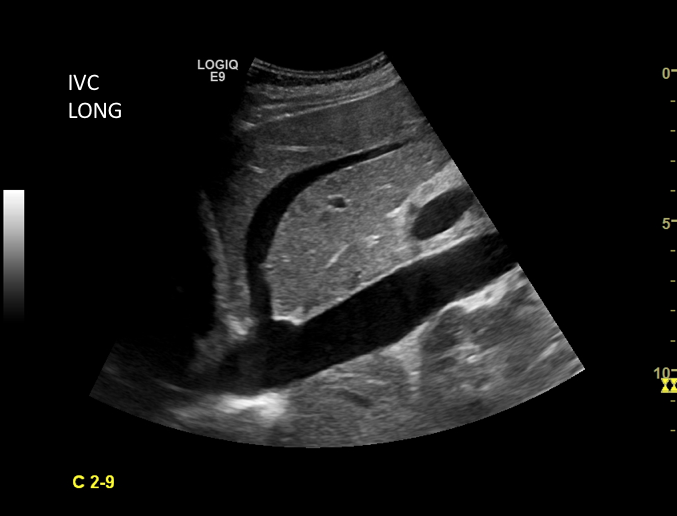
IVC Long with Hepatic Vein and Right Atrium
How does the RUSH Exam help you decide what kind of shock the patient has?
The way I do this is to image the IVC first. Then I combine the findings of the IVC with the heart findings, the patient’s history and the physical exam to differentiate the various shock states. See in the chart below, the IVC discriminates between volume depletion causes of shock (the tank is empty) and causes of shock caused by either low cardiac output (pump problems) or blockages to vascular flow (pipe problems).
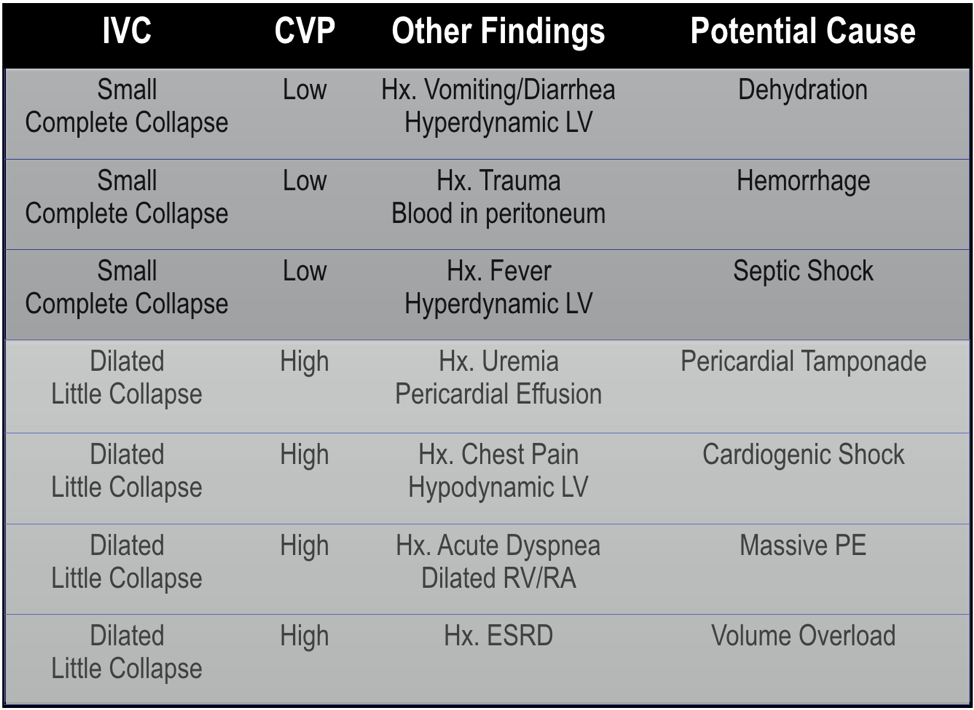
Shock Evaluation Cases
What is the RUSH’ed Exam?
The RUSH’ed Exam is our name for incorporating every POCUS exam we taught you into a single diagram. It stands for the Extended RUSH Exam. The concept is that you use the RUSH Exam to diagnose septic shock. The Extended RUSH Exam includes views of the gallbladder or the lungs to help you find the infection.
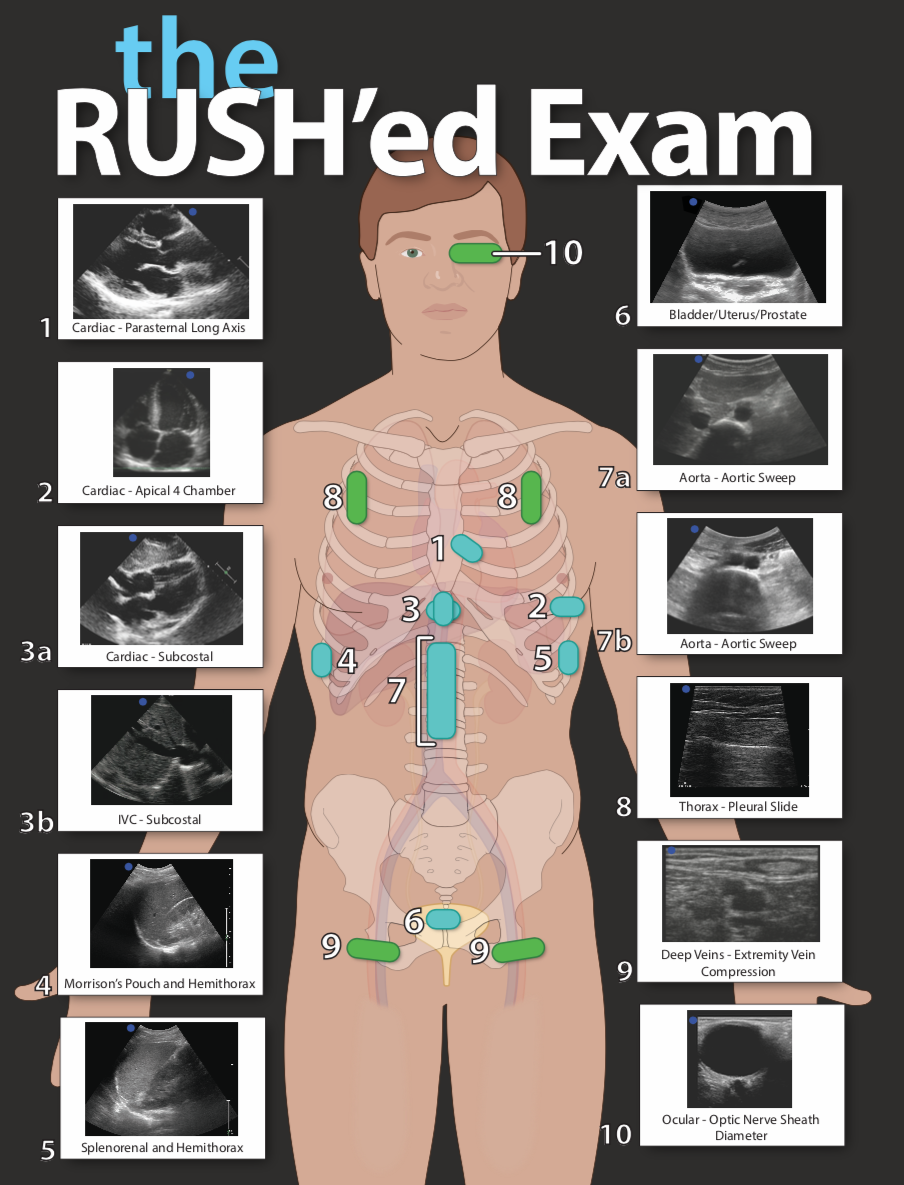
Do I need to ask the patient before I ultrasound them?
Yes. In fact we ask that you explain the ultrasound procedure to the patient. The patient will not be charged for an ultrasound exam done by you the student. However, they may have another ultrasound done for clinical reasons which they may receive a charge. So it is good to explain this to them. We also ask that you obtain written permission before you perform the ultrasound. On the Phillips Ultrasound system tablet there is an electric consent. If you cannot find this link, you can use you can use the link below. If you access the link from your smart phone or tablet, the patient can use their finger to sign their name.
<hpstyle="text-align: center;">Patient Consent
How do I report my findings?
Please see the links below to submit your image. This is the same link that is in D2L. To obtain your evaluation of your images and to receive credit for the assignment, you must complete the assignment including submitting your images and report. Please submit quality images and videos. We cannot give you good quality feedback if we cannot see your ultrasound images clearly.
Lumify Quick Start Guide Page 1 Page 2 Cleaning Instructions
How to Load Clerkship Ultrasound Images and Report
What if I have trouble uploading the images?
Please contact us at: dkaminstein@augusta.edu
What to do if I find an emergency pathology like a ruptured abdominal aortic aneurysm?
Please immediately contact your faculty supervisor. You should have an emergency medicine doctor immediately available. Your finding may not mean anything clinically, but your faculty should always be informed if you find any potentially clinically relevant information.
After I complete my EMED images, what else do I need to do to complete my clerkship ultrasound requirements?
Completion on the EMED ultrasound interactive module and quiz is due at the end of your clerkship rotation. Click the link below to view the EMED5001 ultrasound interactive module and then click "diagnose" to complete the quiz for your grade.